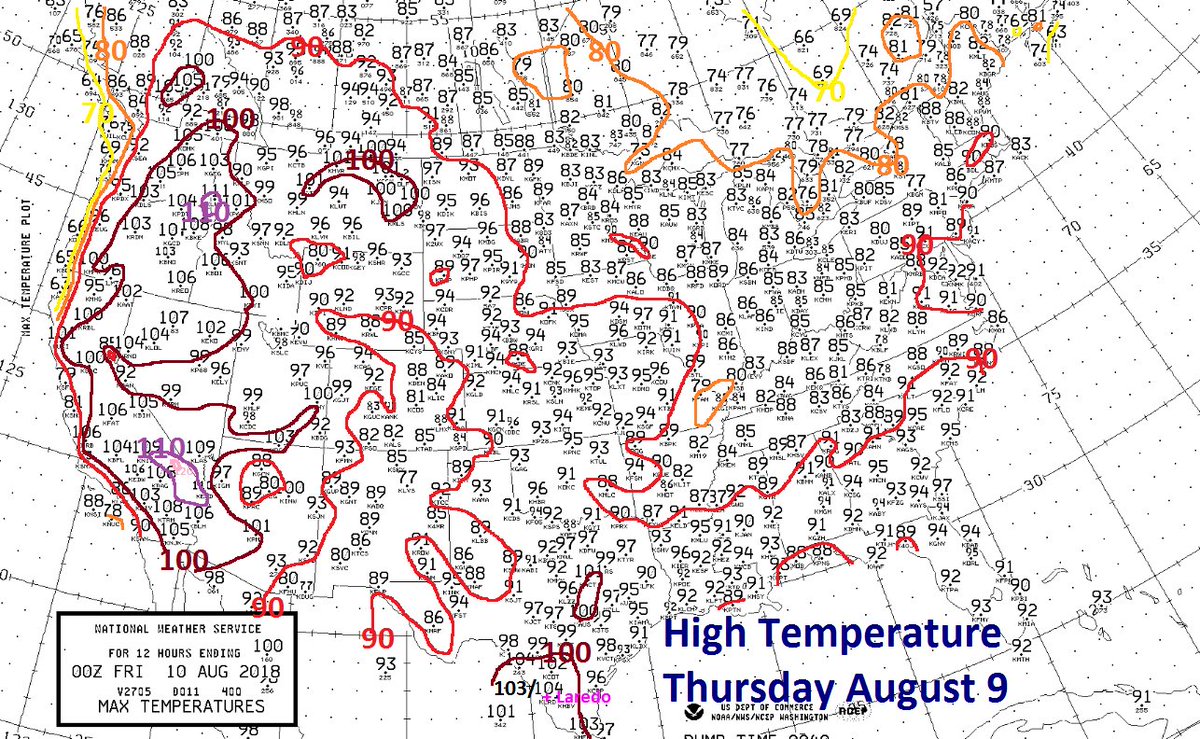Thursday August 9th… Dear Diary. The main purpose of this ongoing post will be to track United States extreme or record temperatures related to climate change. Any reports I see of ETs will be listed below the main topic of the day. I’ll refer to extreme or record temperatures as ETs (not extraterrestrials)😊. Here is today’s main climate change related topic:
Tipping Point Discussion…Part 1) Greenland Ice Sheet
(As usual, this will be a fluid post in which more information gets added during the day as it crosses my radar, crediting all who have put it on-line.)
All keeping tabs on the climate issue were quite alarmed but yet intrigued upon seeing this item this week:
Quoting from the Huffington Post article:
In a study published in Nature Communications, scientists based in Europe and the U.S. describe how the glaciers and ice caps that cover tens of thousands of square miles along the coast of Greenland have reached a critical “tipping point,” beyond which further melting is unavoidable. Troublingly, the ice had already surpassed this tipping point 20 years ago, the researchers said — only the technology to confirm this hadn’t existed until now.
“These peripheral glaciers and ice caps can be thought of as colonies of ice that are in rapid decline, many of which will likely disappear in the near future,” said Ian Howat, study co-author and glaciologist at Ohio State University, in a statement last week. “In that sense, you could say that they’re ‘doomed.’”
The complete melting of Greenland’s coastal ice could raise global sea levels by about 1.5 inches, researchers said. It’s an increase that could impact some islands and low-lying coastal areas through flooding, erosion and other effects. But according to the study’s authors, there’s much more at stake than even that.
“The [1.5 inch figure] does not sound like much,” lead author Brice Noël told The Huffington Post on Thursday from Utrecht University in The Netherlands, where he’s a doctoral researcher. “But these ice caps are an alarm signal of what will happen on the Greenland ice sheet if temperatures continue to increase.”
The Greenland ice sheet, which covers about 80 percent of the island’s surface, is the second-largest ice body in the world after the Antarctic ice sheet. The same processes that have caused the accelerated melting of Greenland’s coastal ice bodies could also influence the island’s massive ice sheet — with devastating results, Noël said. “For now, the ice sheet is still safe,” he said. “Its tipping point hasn’t been crossed yet. But if warming continues, it’s very likely that it will be crossed.”
If the entire Greenland ice sheet were to melt, it would cause a global sea level rise of more than 20 feet.
So I think we have an answer. Yes the outer edges of Greenland have reached a point of no return, but the great interior bulk is probably stable. There still should be time to prevent world wide devastating sea level rise provided that nation’s act and act now. I’ll continue to add items to this Greenland post as they come to my attention.
………………………………………………………………………………
On Friday our California heat wave will move north and pay a scalding visit on the Pacific Northwest and western Canada:
Here is some of today’s climate related news:
(If you like these posts and my work please contribute via the PayPal widget, which has recently been added to this site. Thanks in advance for any support.)
The Climate Guy




 Bob HensonVerified account @bhensonweather
Bob HensonVerified account @bhensonweather
 The Associated PressVerified account @AP
The Associated PressVerified account @AP Weather UndergroundVerified account @wunderground
Weather UndergroundVerified account @wunderground

 Baker City, Oregon reached 108°F this afternoon, the hottest temperature on record. This breaks the old record of 106°F set on Aug 4, 1961. The low temperature there was 50°F this morning.
Baker City, Oregon reached 108°F this afternoon, the hottest temperature on record. This breaks the old record of 106°F set on Aug 4, 1961. The low temperature there was 50°F this morning.  Richard Heatwave Berler @HeatwaveKGNS
Richard Heatwave Berler @HeatwaveKGNS

